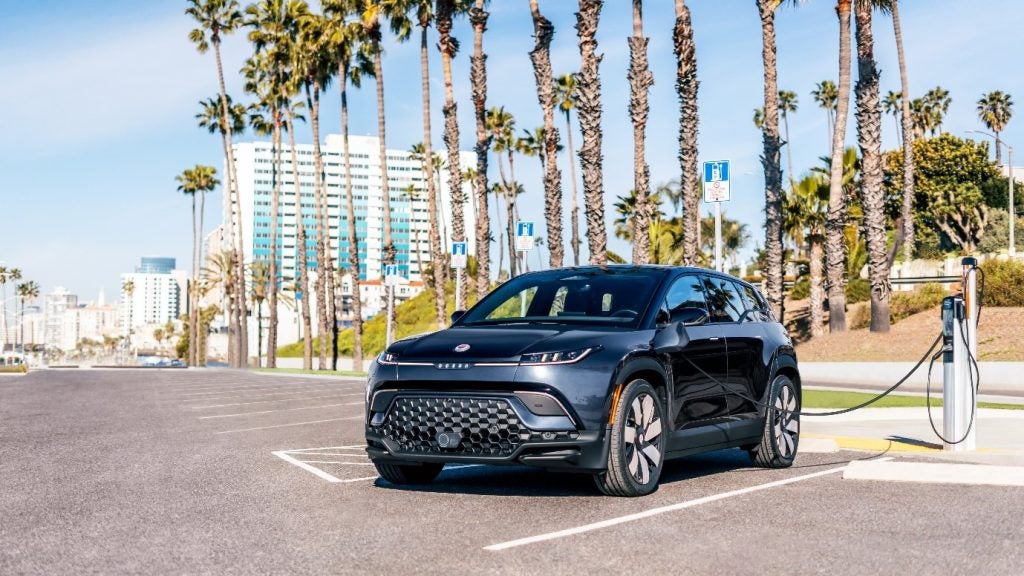
The automotive industry’s contribution to global greenhouse gases (GHGs) – broadly speaking – takes two main forms. First, there’s the contribution of road transport – passengers and freight – that is related to economic activity, the end-use of the auto industry’s products. The UN’s IPCC estimates that the transport sector as a whole accounts for approximately 23% of total energy-related CO2 emissions. The IPCC also argues that there is a danger that transport emissions could increase at a faster rate than emissions from other end-use sectors as per capita transport demand accelerates.
In particular, rising incomes and the development of infrastructure in developing countries over the decades to 2050 will put upward pressure on greenhouse gas generation. As economies develop more industrial activities, the GHG-intensity of economic output goes up as people and goods in new supply chains move about more. Higher final household demand for consumer goods also follows higher incomes – particularly as economies move from being per capita low-income to middle-income.
Breaking down the transport total, the IEA estimates that road vehicles – cars, trucks, buses and two- and three-wheelers – account for nearly three-quarters of transport CO2 emissions. However, it also says that the Covid-19 pandemic caused a big decline in road transport in regions with lockdowns in place – dropping by between 50% and 75% in the first half of 2020, with global average road transport activity almost falling to 50% of the 2019 level by the end of March 2020.However, as the pandemic eases and economic activity picks up, so will transport-related emissions.
Regulators and governments cannot ignore the sizeable position of transport in the mix of national greenhouse gas emissions. To take the UK’s case, if the target is for the country’s economy to be net carbon zero by 2050 – as the UK’s government has set out – then transport has to be addressed.
The UK’s 2050 net zero target — one of the most ambitious in the world — was recommended by the Committee on Climate Change, the UK’s independent climate advisory body. Net zero means any emissions would be balanced by schemes to offset an equivalent amount of greenhouse gases from the atmosphere, such as planting trees or using technology like carbon capture and storage. It’s a tall order if the government also wants to create the conditions for economic growth that raises incomes and well being for its population. Transport is the constant at the heart of economic activity.
Market interventions – incentives and disincentives – take a number of forms. It is important to appreciate that the goal of a greener road transportation sector, for both goods and people moving, also coincides with another important end-user benefit: better fuel economy for lower vehicle running costs. National governments have also factored in other elements of the national interest – for example lowering oil imports and reducing traffic congestion on the roads (which also comes with economic costs). There is also rising evidence of the harmful health effects of small particulates and gases that come with other tailpipe emissions – most notably, nitrogen oxides. There is therefore a confluence of factors that make policymakers generally attracted to managing transport sector activity – and things like the overall modal split, especially in highly populated cities – in the context of aiming for higher economic growth while avoiding losing popularity among voters.
How well do you really know your competitors?
Access the most comprehensive Company Profiles on the market, powered by GlobalData. Save hours of research. Gain competitive edge.

Thank you!
Your download email will arrive shortly
Not ready to buy yet? Download a free sample
We are confident about the unique quality of our Company Profiles. However, we want you to make the most beneficial decision for your business, so we offer a free sample that you can download by submitting the below form
By GlobalDataA look around the world shows a variety of policy making and regulatory levers at work, some better than others, within a general aim of reducing the transport sector’s consumption of energy and especially fossil-fuels. From a strategic point of view, economies also benefit from having industrial sectors that are internationally competitive and that embrace advanced technologies. In automotive, that means having products meeting acceptable performance criteria – including running costs (or total cost of ownership) of which fuel economy will be a significant part. The market has generally been moving in the direction of – for a given class of vehicle – improved fuel economy being in the long list of consumer wants. Against that, manufacturers are under pressure to pack vehicles with ever more features and equipment – which comes with some weight penalty, even allowing for advances in design and materials that can counter that.
The US has its CAFÉ rules that come at the problem via manufacturers from a fleet average fuel economy direction (and penalties for non-compliance). The EU has also opted for manufacturer sanctions and fines tied to average fleet CO2 levels. Beijing’s approach has been more chaotic and led by national economic and strategic priorities – which have put electric vehicles centre stage in its longer-term development plans.
In the US, the federal government has not taxed gasoline. Historically, that helped to keep pump prices down and encouraged long commuter journeys by car and low-density urban development. The US auto industry effectively colluded with its customers to produce the gas guzzling large cars of the 1960s and 1970s.
The oil crises of the 1970s hit America’s economy hard and the federal government responded with Corporate Average Fuel Economy (CAFÉ) standards designed to encourage manufacturers to produce more efficient vehicles or be subject to penalties. The CAFÉ achieved by a fleet of vehicles in a given model year is a production-weighted mean fuel economy (miles per gallon) for passenger cars and light trucks produced for sale in the US. The CAFÉ rules have been criticised by some for failing to ‘prod’ the market sufficiently in the direction of higher sales of lighter or smaller vehicles. Indeed, some manufacturers – such as European importers to the US – viewed the penalties as a cost of sale and did not even attempt to comply with the regulations. It has also failed to prevent the US vehicle market’s drift towards heavier trucks (SUVs and pickups). There can be little doubt though, that CAFÉ standards have supported, along with the industry’s technological advances – for example in developing more efficient high pressure direct-injection gasoline engines – the trend toward more efficient products on a like for like basis (leaving aside market segmentation effects).
Where does that leave the US in 2021? The CAFÉ framework is still in place and was subject to considerable political debate during the Obama and Trump presidencies. Automakers – particularly the US domestics – have had to strike an uneasy balance. They don’t want anything too tough from the regulators, but they understand the direction of travel around the world and want US standards that don’t diverge from international norms, broadly speaking, even if the projected greener powertrain mix and associated investments add cost in the short-term. The Biden administration has said the new Biden CAFÉ standard will be 52 miles per gallon by 2026, on average. For comparison, regulations enacted by the Obama administration in 2012 required that passenger vehicles sold by automakers achieve an average of roughly 51 miles per gallon by 2025. The Trump administration loosened the standard in 2020 to about 44 miles per gallon by 2026.
The Biden administration plans another set of tougher mileage regulations for vehicles produced beyond 2026 (with a 10% stringency increase in the 2023 model year), which is seen as another step towards pushing manufacturers into exiting the ICE market. However, right now, electric vehicle penetration in the US is being held back by the high purchase price of the cars and a need for more charging infrastructure. President Biden has said that he wants half of new cars sold in the US to be battery-powered (includes plug-in hybrids and hydrogen fuel-cell electric powertrains) by the end of the decade. He wants more investment in charging stations, but getting the relevant legislation passed with the sums involved approved is a challenge. He’d also like to see a bigger tax credit for electric vehicles. A $7,500 tax credit is available, but it varies by brand and model and is seen as a complex incentive – related to individual tax paymentscompared to ‘cash on the hood’. There is a general perception that charging could be difficult due to a patchy charge station network. In addition, the venerable goal of a greener transport sector and more EVs on the road is somewhat overlaid with earthy political considerations never far from the surface involving which companies are primed to benefit and where the manufacturing jobs are.
Europe’s CO2 model
In Europe, the EU has focused on a regime of fleet sales weighted CO2 averages and fines for companies that exceed CO2 gram targets. Like the US, it impacts vehicle companies directly with fines for missing targets. Companies are thus incentivised to ramp up sales of low CO2 models such as EVs and hybrids. Delays to model introductions can be costly, as illustrated by VW’s fine of over EUR100m when it just missed its 2020 target, blamed on delays to the launch of its ID.3 electric car.
However, the EU regime allows carmakers to pool their emissions with a cleaner company. If that company sells zero-emission vehicles, it becomes particularly attractive to team up with. Tesla has done some good business ‘selling’ credits to companies close to incurring heavy fines.
One very important historical detail in Europe concerns the status of diesel. In the noughties, European governments saw diesel use in light duty vehicles as a good way to lower CO2 contributions, because diesel cars obtain 25-35% better mileage than equivalent gasoline cars – which means less CO2 per distance travelled. It was widely seen by policy makers as Europe’s green solution for road transport. Governments created tax regimes that favoured diesel cars over gasoline and the automotive industry responded by developing diesel engine cars that were increasingly refined. Diesel penetration of the car market rapidly grew.
Diesel share of the European car market has fallen back in recent years, however, as diesel’s image has been tarred by VW’s dieselgate scandal and governments have responded to mounting evidence of the harmful effects on air quality caused by diesel engines, especially small particulate matter. Clean air regimes for urban areas have increasingly targeted diesel vehicles. At the same time, gasoline engines have become more efficient due to the application of high pressure direct injection systems; more hybrids and plug-in hybrid systems have also become available for the larger vehicles that suited diesels. The net result is that diesel share of the car market is falling across Europe – which puts upward pressure on fleet average CO2 numbers. This has happened at the same time as market segmentation has shifted in the direction of heavier SUVs and crossovers.
Carmakers have to counter this by investing heavily in technologies that can make vehicles more fuel efficient (with lower CO2 averages) while also rolling out more electrified vehicles. As a wave of newly introduced electric vehicles gathers pace, the competitive pressures rise also. No manufacturer wants to ‘miss the boat’ and many are acutely aware of the market risks that come with the rollout of new technologies. Some will conclude that it is better to sell EVs for low margin – or even at a loss – to start, if that ensures acceptable market presence and helps to avoid EU fleet average CO2 fines.
Momentum towards EVs now established – production to increase rapidly
GlobalData figures show that battery electric vehicles accounted for 3.2% of all new light vehicle production in 2020, up from 2.4% in 2019 and a noticeable leap from 0.5% in 2015. By 2025, it is forecast that global electric vehicle production will rise four-fold to more than 10.6 million units, accounting for 10.7% by volume. By 2030, global electric vehicle production should hit 23.6 million units, accounting for 22.1% of the total light vehicle market. By 2035, GlobalData forecasts that global electric vehicle production will be 34.1 million units, accounting for 31.1% of total light vehicle production.

Shifting cost economics
Another important dimension is cost economics. Investment sums in electrified vehicles are much higher than for incumbent ICE automotive tech. Unit prices will fall as volumes rise, but that volume effect will take time. Incremental improvements to electric drivetrain cost and performance on major system components will also act to bring cost – and retail price – for EVs down.
Progress is being made. Estimates at the end of 2020 put the average price of an EV battery pack at $137 per kWh. Forillustration, that would mean a 100kWh battery pack like those in the Tesla Model S would cost the manufacturer around $13,700 in total. This represents a vast reduction compared with EV battery pack prices in 2010 at the start of the growth phase when they cost around$1,100 per kWh.
The point at which EVs reach price parity with combustion-powered vehicles is heavily influenced by the unit cost of the battery pack. Most observers hold that point to be whenbattery packs cost around $100 per kWh to produce – which could be around 2025.
The levers available to manufacturers looking to reduce the cost of battery packs includereducing the raw material cost through larger scale mining, reducing process cost or increasingspeed to increase economy of scale, and technical improvements that optimize battery packdesign and performance.
As the unit costs of electric vehicles come down allowing retail prices to fall, demand should naturally rise, with ICE vehicles replaced – in the market in developed countries first – over the years to 2030. Around the world though, it is expected that charging infrastructure constraints and cost issues will keep ICE technology in business beyond 2030 – as the above chart illustates. Moreover, fossil-fuel vehicles will sit around in the parc of vehicles in use even in developed markets that are heading fast towards electrification. Much depends on the age profile of a given country’s parc and any measures that governments may take to accelerate the scrappage of ICE-powered vehicles.
China moves fast
China moved faster than other nations to secure EV raw material supplies and production capacity. This is driven by the Chinese government’s determination that battery electric vehicles were of strategic importance to China’s economy on a global scale, and the associated grants and support entailed by that.
Looking back to 2015, 33% of all EVs on the road could be found in China. That gave it the largest single country share of EVs at the time, but the majority of EVs were still registered in the US and Europe. This was partially driven by then-impressive sales of Tesla models, which were predominantly sold in the US and Europe.
However, China has aggressively built out its EV production capacity, with all the major Chinese automakers now offering multiple electrified models. As a result, China’s share of all EVs on the road has risen in 2020 to 48% – this is a larger than the combined US and Europe figure and is driven by popular, affordable models such as the Wuling Hongguang Mini EV.
Unsurprisingly, China also dominates the landscape for EV production as the largest market for the technology. However, this domination has been gradually eroded as the appetite for EVs in other regional markets has increased and the need to build out more regional production arises.
In 2015, China accounted for 59% of all EVs built by volume, with the next largest production location being North America (19%) followed by Western Europe (14%). This reflected China’s early acceptance of the technology and its pace at building out manufacturing capacity.
However, moving through to 2020, the regional picture is more fragmented. China still accounts for the majority of EV production at 44% but significant growth has taken place in Europe. This reflects the growth of new EV production in Europe with notable examples including Volkswagen’s new ID EV production line in Wolfsburg and the acceleration of Nissan Leaf production in Sunderland, UK.
Central and Eastern Europe is likely to see EV production growth in the future, in line with existing growth in automotive production in the region. This is thanks to its proximity to the entire European market combined with lower wage costs in those countries compared with Western Europe. Notable examples include plans for a battery gigafactory in the Czech Republic to serve Skoda and other OEMs, or investments in Hungarian EV and battery manufacturing by the likes of Daimler, Samsung SDI and SK Innovation.
A word on other sustainability aspects to EVs
Are EVs, as zero emission vehicles, the perfect antidote to road transport GHGs caused by passenger cars? They may be better than fossil fuel equivalents in terms of end use, but there are significant negatives associated with them. For one, there’s the big question of how the electric power to charge the batteries is generated. If it’s a sustainable source – such as hydro-electric or wind – great. But if the source is a coal-fired power station, or indeed gas or an incinerator, that’s not so good. Arguably, the CO2 is moved from the vehicle tailpipe to the power station. Nuclear is also a much-debated energy source – though it is undeniably a good source from a CO2 point of view. In the case of France, high nuclear share in its power generation helps bring down the CO2 grid penalty for electric vehicles. It is clearly something that will vary from place to place. In the case of wind power, from day to day.
There’s a reason why Norway – ironically rich in oil and gas reserves – was able to go for electric vehicles in a big way (they dominate its car market). It has a relatively small population, much of it in and around its capital, Oslo. More importantly though, it has big natural hydro-electric resources and capabilities. Switching to electric cars early was much easier for Norway than it would be for a bigger economy heavily invested in major ICE-based automotive manufacturing and without natural HEP resources.
Another potential fly in the ointment comes with battery materials – in the case of lithium-ion, precious minerals need to be mined and that’s inevitably a CO2-intensive activity. Which brings us to the can of worms that is automotive supply chains. More on that in the third part of this series.
Finally, let’s not forget that transport does not exist in a vacuum. It exists because humans demand it and prevailing technologies can deliver transportation solutions at acceptable price. We live in a society that has a high degree of transport intensity. It is evident in myriad products manufactured and consumed, as well as the journeys made by people. These are variables that can be influenced by cost and government policy – for example in the provision of public transport to determine or impact transport modal split in urban areas. Technology, as we have seen over the last 18 months or so, can also materially impact the requirement for office workers to commute to a place of work. These social and economic environment aspects to our lives and the role of technology as facilitator are subject to change, as are opinion and attitudes. We may like driving cars, but we also generally dislike traffic jams and environmental harm. Our lifestyles come with consequences, not all of them positive.







